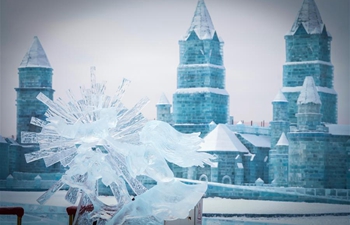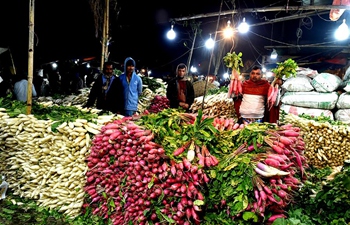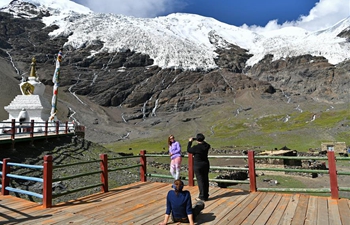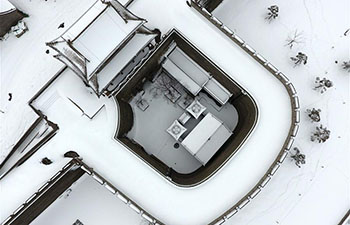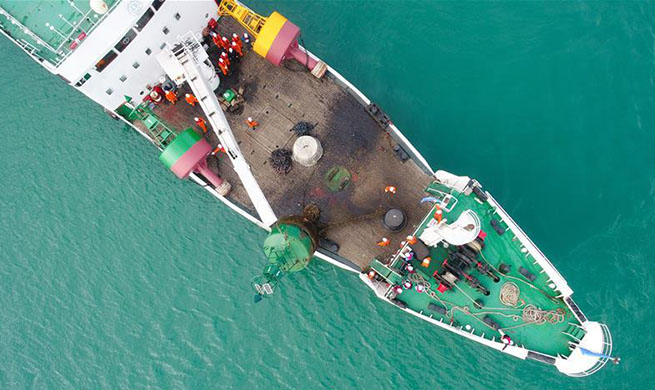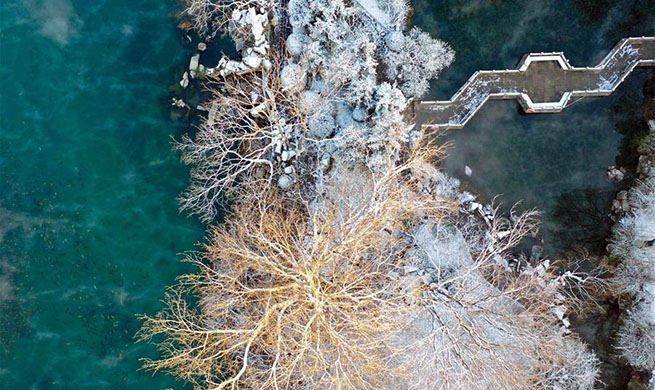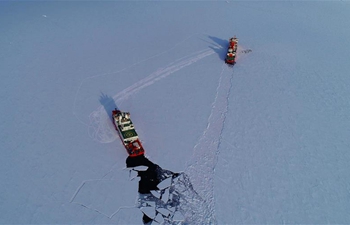by Duncan Murray
SYDNEY, Jan. 9 (Xinhua) -- With bushfire conditions set to deteriorate once more, Australian firefighters and communities scrambled with whatever preparations possible to help reduce the risk to lives and property over the difficult days ahead.
High temperatures and strong winds forecast for Friday and into the weekend will push the fire danger risk level once more to "extreme".
Nationwide this fire season, 25 lives have been lost, over 2,000 homes destroyed and more than 10 million hectares of wilderness has burned.
Victorian State Control Centre spokesman Luke Heagarty told Xinhua earlier this week that in the lead up to extreme fire conditions the priority is preparing communities and reducing the risk of fire spread where possible.
"It's going to take us a very long time to contain the fires fully, but what we can focus on is prioritizing our efforts so that there's a reduction in the likelihood of impact to communities," Heagarty said.
Removing potential fuel sources around homes and between sections of forest is one strategy firefighters can use to slow the progression of the fires.
On Thursday, around 1,000 members of Victoria's volunteer based Country Fire Authority (CFA) worked to build containment lines around the state's 23 ongoing fires, which have burned over 1.2 million hectares.
However, the job of saving lives requires extensive coordination between emergency services and those living and working in the path of the blazes.
Heagarty explained that although online emergency warnings and fire updates are useful, when modern communications fail, the old fashioned methods can be just as good.
"A lot of the work that's been successful in these parts of the state is through face to face interaction, so community meetings, and then also more targeted door knocking exercises," he said.
Air Force helicopters have been used to reach more isolated communities, where often telecommunications have been damaged, providing them with satellite phones in order to keep in touch and coordinate supply drops.
"Whilst there's a number of isolated communities, we are in contact with the majority of those and providing them with what they need," Heagarty said.
Victoria has been less badly affected than neighboring state New South Wales (NSW) this fire season, with just three deaths and 244 homes destroyed. However over the past month the situation there has significantly worsened.
Thousands of visitors and residents have fled fire-prone areas in the state's East Gippsland region and earlier this week around 1,400 people were evacuated by navy vessels from the coastal town of Malacoota where they had become trapped by fire.
While it's hard to know exactly what days of extreme fire risk will bring, so far this season those conditions have caused the highest loss of life and property, meaning that authorities hope for the best, and prepare for the worst.
One concern is several fires on the NSW and Victoria border which appeared likely of merging into a "megablaze" over half a million hectares in size.
"The reality of some of the weather conditions that we've seen over the past couple of weeks and are likely to see later this week means that it's hard work for us to contain those fires to a point that they wouldn't merge," Heagarty said.
He added that areas as yet untouched by the fires can rapidly become embroiled in the crisis as new fires take hold, from lightning strikes or other ignition sources.
"I think we will continue to see days where we will be challenged by new fires so we can't take our eye off the fact that although we've got very significant fires in the east at the moment, that we could potentially see other fires start," he said.
